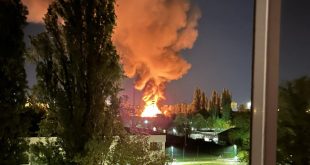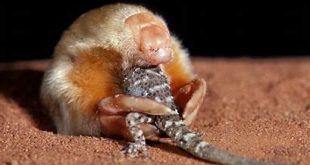There is growing public support among the world’s scientific community for fully exploring the possibility the coronavirus may have emerged from the Wuhan Institute of Virology, leading to the global outbreak that has killed more than 3.7 million people worldwide.
The lab leak theory was largely sidelined in public scientific debate in the early days of the outbreak, after the first cases of COVID-19, the disease caused by the virus, were confirmed in the central Chinese city in late 2019.
In the following months, observers say, the hypothesis became perniciously intertwined with the administration of former US President Donald Trump’s inflammatory anti-China rhetoric and xenophobic framing of the pandemic, causing an apparent chilling effect among the scientific community.
“The question of whether a lab accident was the origin got stuck in this hyper-politicised context,” J Stephen Morrison, director of the Global Health Policy Center at the Center for Strategic and International Studies, told Al Jazeera.
“When Trump was instrumentalising the issue as part of an anti-China and anti-Asia campaign, people didn’t want to associate with that. And so they kept their distance.”
The February report said it was “likely to very likely” the virus emerged through a natural zoonotic, or animal-to-human, transmission while concluding the theory it accidentally leaked from a lab was “extremely unlikely”. China has repeatedly denied the lab was responsible for leaking the virus.
Virologists and scientists in relevant fields who acknowledge the possibility the virus could have leaked from a lab in Wuhan, and support a full, transparent investigation, differ greatly in how likely they consider either scenario.
Many argue the theory that the outbreak began via animal to human transfer remains more likely. Others say there is no direct evidence available to say one scenario is more likely than the other. Of further debate is whether the sequence of the virus’s genome precludes human manipulation in a lab.
Nevertheless, the recent shift in perspective includes the US government’s top infectious disease expert Anthony Fauci, who last year largely dismissed the idea, saying the science “strongly indicates” that the virus emerged naturally.
Last week, in a rare public statement detailing US intelligence community thinking and calling for further investigation, President Joe Biden said the agencies have “coalesced around two likely scenarios” – the zoonotic transfer and the accidental Wuhan lab leak.
“While two elements in the (intelligence community) lean toward the former scenario (zoonotic) and one leans more toward the latter (the lab leak) – each with low or moderate confidence – the majority of elements do not believe there is sufficient information to assess one to be more likely than the other,” said the statement, which directly quoted portions of an intelligence report that has not been publicly released.
On May 30, the Sunday Times reported that the United Kingdom’s intelligence officials have shifted their view of an accidental Wuhan lab leak, calling it “feasible”.
‘Both remain viable’
Richard Ebright, a professor of chemistry and chemical biology at Rutgers University, said little has changed in terms of scientific evidence since the genome sequence of the virus was first released in January of 2020.
He said there is “no secure basis to assign relative probabilities to the natural-accident (animal to human) hypothesis and the laboratory-accident hypothesis”.
“In particular, all scientific data related to the genome sequence of SARS-CoV-2 and the epidemiology of COVID-19 are equally consistent with a natural-accident origin or a laboratory-accident origin,” he said in an email to Al Jazeera. “This was clear already in January 2020, and has been clear at every point in time from January 2020 through the present.”
Ebright, who was one of 21 international scientists who laid out what a full, “interdisciplinary” investigation in Wuhan should look like in an open letter in March, said the coronavirus origin “can be answered only through a forensic investigation, not a scientific speculation”.
“I’m more convinced than ever that this is a natural virus,” he told the news organisation.
On May 14, 18 top biologists studying the pandemic published a letter in Science magazine calling for further investigation, saying the “accidental release from a lab and zoonotic spillover both remain viable” origin scenarios.
The experts criticised the WHO-commissioned investigation, saying the two theories were not given “balanced consideration” while noting that only four of the 313 pages of the report addressed the possibility of a laboratory accident.
Circumstantial evidence
Others have cited circumstantial evidence they say supports either theory.
In the case of the zoonotic theory, virologists have long noted that the Huanan seafood market in Wuhan, where a wide array of exotic animals were also sold, would have been an ideal place for zoonotic spillover, which was responsible for past coronavirus outbreaks, including the coronaviruses that caused the previous outbreaks of SARS and MERS. Finding the species responsible for spreading those viruses can take years.
Meanwhile, Shi Zhengli, a noted scientist with the Wuhan Institute of Virology, wrote in a statement in Science magazine last July that it was impossible for the virus to have emerged from her lab, saying her team had “never been in contact with or studied this virus” and had all tested negative for coronavirus antibodies. However, she noted at the time the lab had not done genome sequencing on all of the virus samples it had collected.
Some intelligence officials have also reportedly questioned the transparency of the so-called “gain of function” research conducted in China, which can involve intentionally increasing the transmissibility of a virus to study how it evolves.
On May 23, the Wall Street Journal reported that three researchers from the Wuhan Institute of Virology became ill enough with COVID-19-like symptoms to require hospitalisation in November 2019. Sceptics have noted the illnesses occurred during the regular flu season.
On Thursday, Fauci called on China to release the medical records of those researchers.
Change in administration
Still, Jon Lieber, the US managing director for Eurasia Group, a political risk consultancy, said the biggest change surrounding the acceptance of the lab leak theory possibility has been a change in US administration, saying that Trump’s lack of credibility had a chilling effect on scientists and fed into “blind spots and bias from the media gatekeepers”.
“Including social media, which banned multiple accounts from talking about this on Twitter and Facebook or flagged people as pushing misinformation,” he told Al Jazeera. “I think the real failure on the part of the scientific community and the media and others was failing to even take this seriously because they didn’t like the messenger.”
Last week, a Facebook spokesperson said the company would “no longer remove the claim that COVID-19 is man-made from our apps”. The decision was made “in light of ongoing investigations into the origin of COVID-19 and in consultation with public health experts”, the spokesperson said.
“It’s a complete failure by the Trump White House,” he said. “If they had any credibility, if they had the ability to convince anybody of anything, they would have been able to expose this as a legitimate origin story a year ago.”
For Biden, the decision to release a statement calling for further investigation serves a domestic purpose – to not appear “weak on China” and head off Republican criticism going into Congressional midterm elections in 2022, said Mathew Burrows, the Atlantic Council director of Foresight, Strategy, and Risks Initiative.
Meanwhile, releasing the statement during the World Health Assembly also again puts Beijing – and the WHO – on notice, he said.
“The US is again a player in the WHO,” Burrows added. “So I think they want to stiffen the WHO against bending too much towards China.”
 Gistfox Your News Window To The World.
Gistfox Your News Window To The World.





